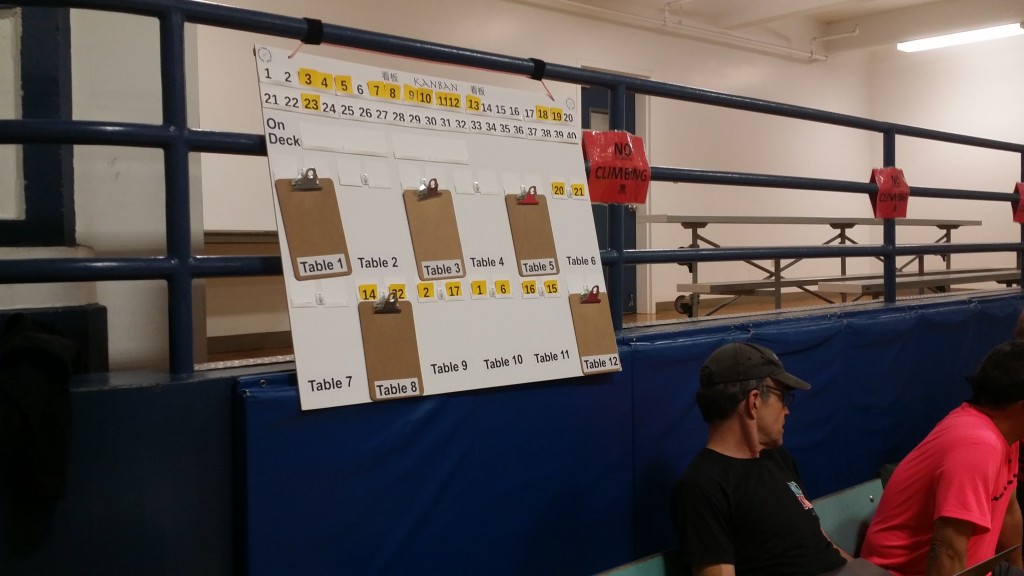The GLTTC used a match scheduling app known as the “kanban system” from 2018 through March of 2024. Seattle Parks and Recreation (SPR) management stopped it’s use on April 5, 2024, and instituted their own rules to govern play. Several reasons were given:
- Kanban infringes on the staff’s union contract.
- Players must have a computer or smartphone.
- SPR does not allow third-party websites.
- It is incompatible with SPR’s “low bar drop-in model”.
We find some of these things to be questionable or incorrect. Also, the kanban shutdown is related to our effort to restore weekend hours. We listed kanban as one of our volunteer successes in our advocacy campaign, and SPR explicitly called for the elimination of kanban in their proposed weekend contract.
SPR has suggested that kanban could be restored if Tuesday evening drop-in table tennis were to be switched to a fee-based program. SPR would charge players quarterly, monthly, or daily. Kim Goldov, the author of the kanban software would need to license it to SPR and potentially make changes. SPR might need to hire additional staff. Please contact GLCC coordinator, Jewels Jugum (Jewels.Jugum@seattle.gov), if you have opinions about kanban or SPR’s suggested fee-based idea. Please sign up for our WhatsApp discussion group to take part in discussions about restoring our kanban system on Tuesday evenings.
The kanban system was created for these reasons:
- The organized competitive structure offered by kanban is fun for players.
- The community center initially only had table tennis on weekends. When weekdays were added, we were told of the importance of us showing solid participation. The kanban system became attraction to bring players to Green Lake. To this end, it has been extremely successful with participation levels hovering around 60 players per night, and as high as 90.
- Beginners can easily be intimidated by the level of play. This is understandable. There is a huge range of abilities in table tennis. Even many of the regular novices can be daunting to watch. When kanban is not being used, players place their paddle next to a table they wish to challenge. The loser of the current match then sits down, and the challenger plays the winner. This presents two issues. First, newcomers may be uncomfortable approaching a table in order to play next. Second, lower level players are inherently discriminated against since winners will end up playing more. Kanban addresses both these issues. The system groups players by ability level, and assigns them to a table. Two more players are assigned to the table when their match finishes. The system assures that everyone gets equal time to play on average, whether they are beginners or top level players.
Kanban started off as a mostly manual system, with scheduling software running on a laptop. The first “kanban board” from 2018 is shown below. Several volunteers were initially needed to help set up the matches.

The kanban system has evolved to the version we have today where all that is needed are smartphones. If players do not have phones, anyone else can help them. Almost 9000 matches have been played in 130 events since 2018. There have been over 5000 participants, 1000 of them unique.
Kanban is unlike any table tennis league system in significant ways. The typical table tennis league requires pre-registration. Player’s must arrive before league play starts and cannot leave until they have played all their assigned matches. Tables are left empty periodically waiting for others to finish their matches. Kanban was written specifically for the GLCC’s drop-in model. Player’s can arrive and leave at any time.
Again, please reach out to Jewels Jugum, if you would like to see kanban play restored on Tuesday evenings.